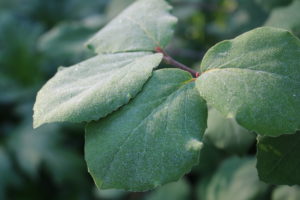Protect Your Plants From Frost
go.ncsu.edu/readext?676996
en Español / em Português
El inglés es el idioma de control de esta página. En la medida en que haya algún conflicto entre la traducción al inglés y la traducción, el inglés prevalece.
Al hacer clic en el enlace de traducción se activa un servicio de traducción gratuito para convertir la página al español. Al igual que con cualquier traducción por Internet, la conversión no es sensible al contexto y puede que no traduzca el texto en su significado original. NC State Extension no garantiza la exactitud del texto traducido. Por favor, tenga en cuenta que algunas aplicaciones y/o servicios pueden no funcionar como se espera cuando se traducen.
Português
Inglês é o idioma de controle desta página. Na medida que haja algum conflito entre o texto original em Inglês e a tradução, o Inglês prevalece.
Ao clicar no link de tradução, um serviço gratuito de tradução será ativado para converter a página para o Português. Como em qualquer tradução pela internet, a conversão não é sensivel ao contexto e pode não ocorrer a tradução para o significado orginal. O serviço de Extensão da Carolina do Norte (NC State Extension) não garante a exatidão do texto traduzido. Por favor, observe que algumas funções ou serviços podem não funcionar como esperado após a tradução.
English
English is the controlling language of this page. To the extent there is any conflict between the English text and the translation, English controls.
Clicking on the translation link activates a free translation service to convert the page to Spanish. As with any Internet translation, the conversion is not context-sensitive and may not translate the text to its original meaning. NC State Extension does not guarantee the accuracy of the translated text. Please note that some applications and/or services may not function as expected when translated.
Collapse ▲A frost warning is in effect for many parts of North Carolina this week. You may have already started planting for spring, or be concerned about some of the plants that have started growing in your yard.
Watch this video for tips on protecting your plants from spring frosts:
Here are some tips for dealing with frost.
- Know which plants in your yard are susceptible to frost. Usually, the new growth on plants is most susceptible to frost damage. New leaves, flowers, and buds are most likely to get damaged. Any plant in a container is also more likely to be damaged by the cold, so consider moving them indoors overnight.
- Know the microclimates in your yard. Frost tends to settle in low-lying areas or shadier parts of your yard. Try to avoid placing sensitive plants here early in the season.
- Take proper care of your plants in preparation. Avoid pruning in the early springtime when plants are first breaking dormancy but there is still a chance of a frost. Pruning encourages the plant to produce new growth, which as you just learned is sensitive to frost damage.
If we are expecting a frost, here are some short-term solutions.
- Water your plants. Adding water to the root area will insulate the plant. This can help to prevent frost damage.
- Cover your plants. Many people use row covers for this purpose, but an old bed sheet is also acceptable. After the sun rises and the day warms up, be sure to remove any coverings on your plants.
Watch your plants after the frost for any damage. It is a good idea to wait to remove the frost damage, as those branches may still be alive. A healthy shrub will recover with new growth in a few weeks time. Resist the urge to remove the damage right away, so you give your plant a chance to continue growing.





